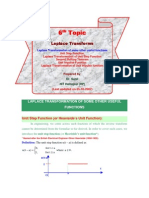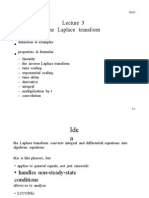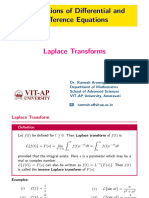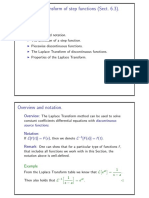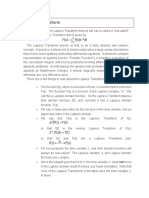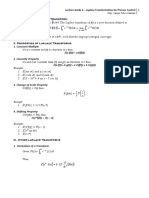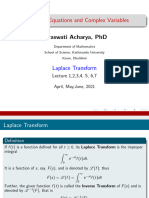0% found this document useful (0 votes)
132 views5 pagesLaplace Transforms of The Unit Step Function
The document discusses Laplace transforms of functions involving the unit step function u(t). It provides three properties of the Laplace transform of u(t) and the time displacement theorem. It then gives three examples of functions and sketches their graphs, expressing the functions using unit step functions and applying the relevant properties to find their Laplace transforms.
Uploaded by
Timothy EroweCopyright
© © All Rights Reserved
We take content rights seriously. If you suspect this is your content, claim it here.
Available Formats
Download as PDF, TXT or read online on Scribd
0% found this document useful (0 votes)
132 views5 pagesLaplace Transforms of The Unit Step Function
The document discusses Laplace transforms of functions involving the unit step function u(t). It provides three properties of the Laplace transform of u(t) and the time displacement theorem. It then gives three examples of functions and sketches their graphs, expressing the functions using unit step functions and applying the relevant properties to find their Laplace transforms.
Uploaded by
Timothy EroweCopyright
© © All Rights Reserved
We take content rights seriously. If you suspect this is your content, claim it here.
Available Formats
Download as PDF, TXT or read online on Scribd
/ 5
